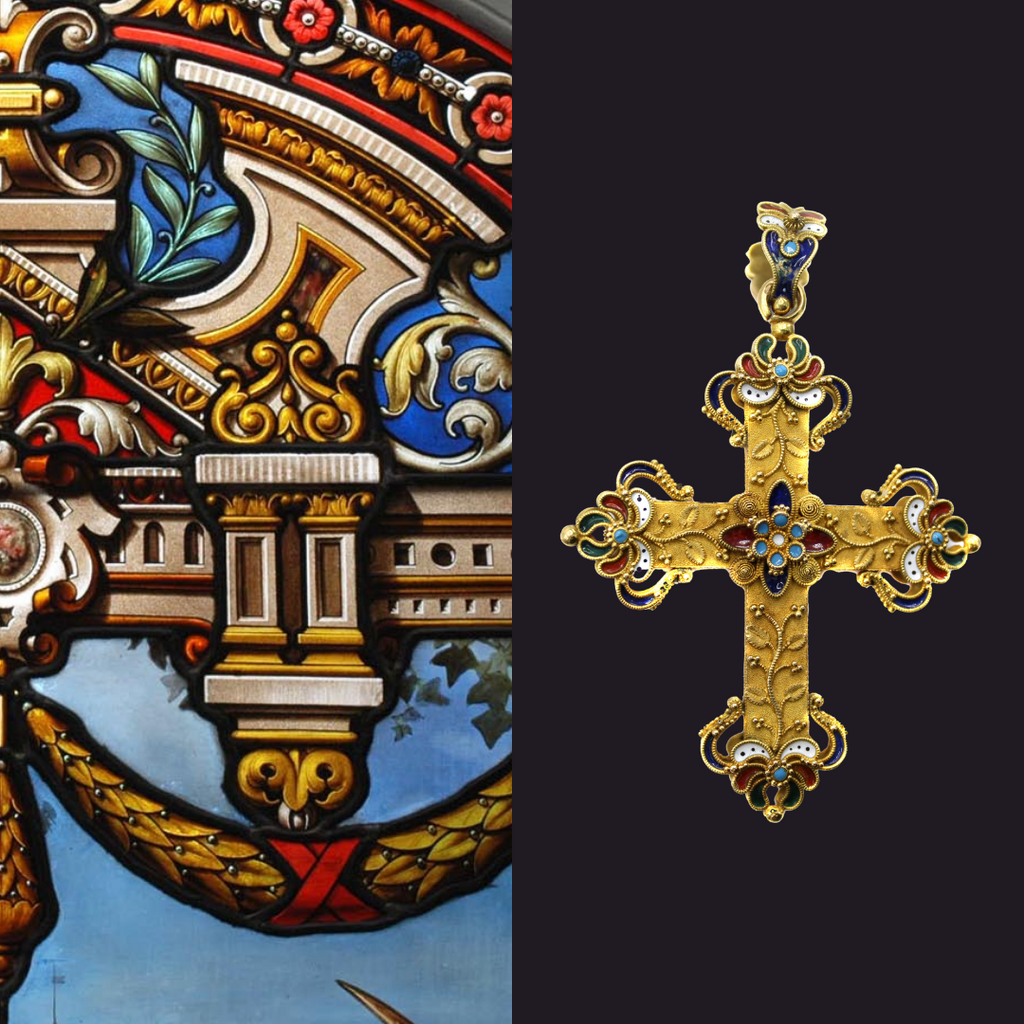
"Neo-Renaissance" manner first began to appear circa 1840. The style is characterized by original Renaissance motifs, taken from such Quattrocento architects as Alberti. These motifs included rusticated masonry and quoins, windows framed by architraves and doors crowned by pediments and entablatures. Interior Décor, Art and Artifacts, including fine jewels, echoed these characteristics, recalling its rich historic sources.

The Neo-Renaissance style stained glass window is the work of the Lorin workshop, in Chartres, dated 1883. Different techniques were used for this composition: some of the glass is painted with enameled paint, with double panes enameled on both sides, which creates a sense of depth (see the man’s puffed doublet sleeves); some are enameled on one side and acid etched on the other (detail of the ladies necklace); some details around the central figures, were made using stencil techniques. This piece is representative of the high-quality artists reached in that period, in their ability to render refined details, the delicacy of the skin, the texture of the clothes (notice the difference between the velvet of the lady’s dress, and the silk of the gentleman’s clothes). The extraordinary refinement of the play of light and color in this composition places this piece at the highest level of quality of its period.

This Etruscan Revival pendant from ca. 1875 in the shape of a cross is Jewelers of this period like were infatuated by the Neo-Renaissance and their work was known for detail and the finest craftsmanship. Antique enamel and 18-karat Gold Cross Pendant is worked in one of the preferred styles of the time, also prominently curated in the work by famed jewelers like Giuliano and Castellani, who were infatuated with the Neo-Renaissance style, particularly depicting Etruscan heritage of Rome. https://rivegauchejewelry.com/.../antique-enamel-18-karat...

A wonderful piece of historic jewelry and a true collectible. Different techniques were used for this composition: some of the glass is painted with enameled paint, with double panes enameled on both sides, which creates a sense of depth (see the man’s puffed doublet sleeves); some are enameled on one side and acid etched on the other (detail of the ladies necklace); some details around the central figures, were made using stencil techniques. This piece is representative of the high-quality artists reached in that period, in their ability to render refined details, the delicacy of the skin, the texture of the clothes (notice the difference between the velvet of the lady’s dress, and the silk of the gentleman’s clothes). The extraordinary refinement of the play of light and color in this composition places this piece at the highest level of quality of its period.
